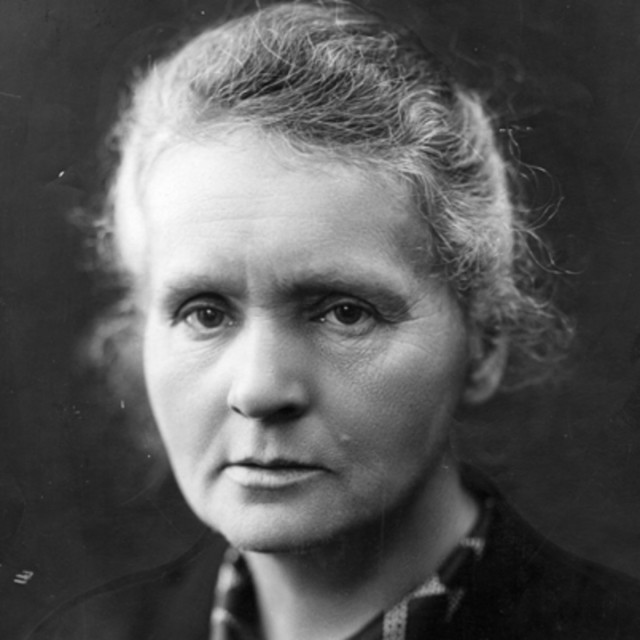Born Maria Sklodowska in Poland on November 7, 1867, to a father who taught math and physics, she developed a talent for science early. But the University of Warsaw, in the city where she lived, did not allow women students. Determined to become a scientist and work on her experiments, she moved to Paris, France, to study physics at a university called the Sorbonne.
In 1895, she married Pierre Curie. Together they discovered two new elements, or the smallest pieces of chemical substances: polonium (which she named after her home country) and radium. In 1903 they shared (along with another scientist whose work they built on) the Nobel Prize in physics for their work on radiation, which is energy given off as waves or high-speed particles. She was the first woman to win any kind of Nobel Prize.
Curie continued to rack up impressive achievements for women in science. In 1906, she became the first woman physics professor at the Sorbonne. In 1909, she was given her own lab at the University of Paris. Then in 1911, she won a Nobel Prize in chemistry. She’s still the only person—man or woman—to win the Nobel Prize in two different sciences.
Curie soon started using her work to save lives. Her discoveries of radium and polonium were important because the elements were radioactive, which meant that when their atoms broke down, they gave off invisible rays that could pass through solid matter and conduct electricity. She used her groundbreaking understanding of radioactivity to help the x-ray take stronger and more accurate pictures inside the human body.
In 1914, during World War I, she created mobile x-ray units that could be driven to battlefield hospitals in France. Known as Little Curies, the units were often operated by women who Curie helped train so that doctors could see broken bones and bullets inside wounded soldiers’ bodies.



 Descargar Google Chrome
Descargar Google Chrome Descargar Mozilla Firefox
Descargar Mozilla Firefox Descargar Opera
Descargar Opera